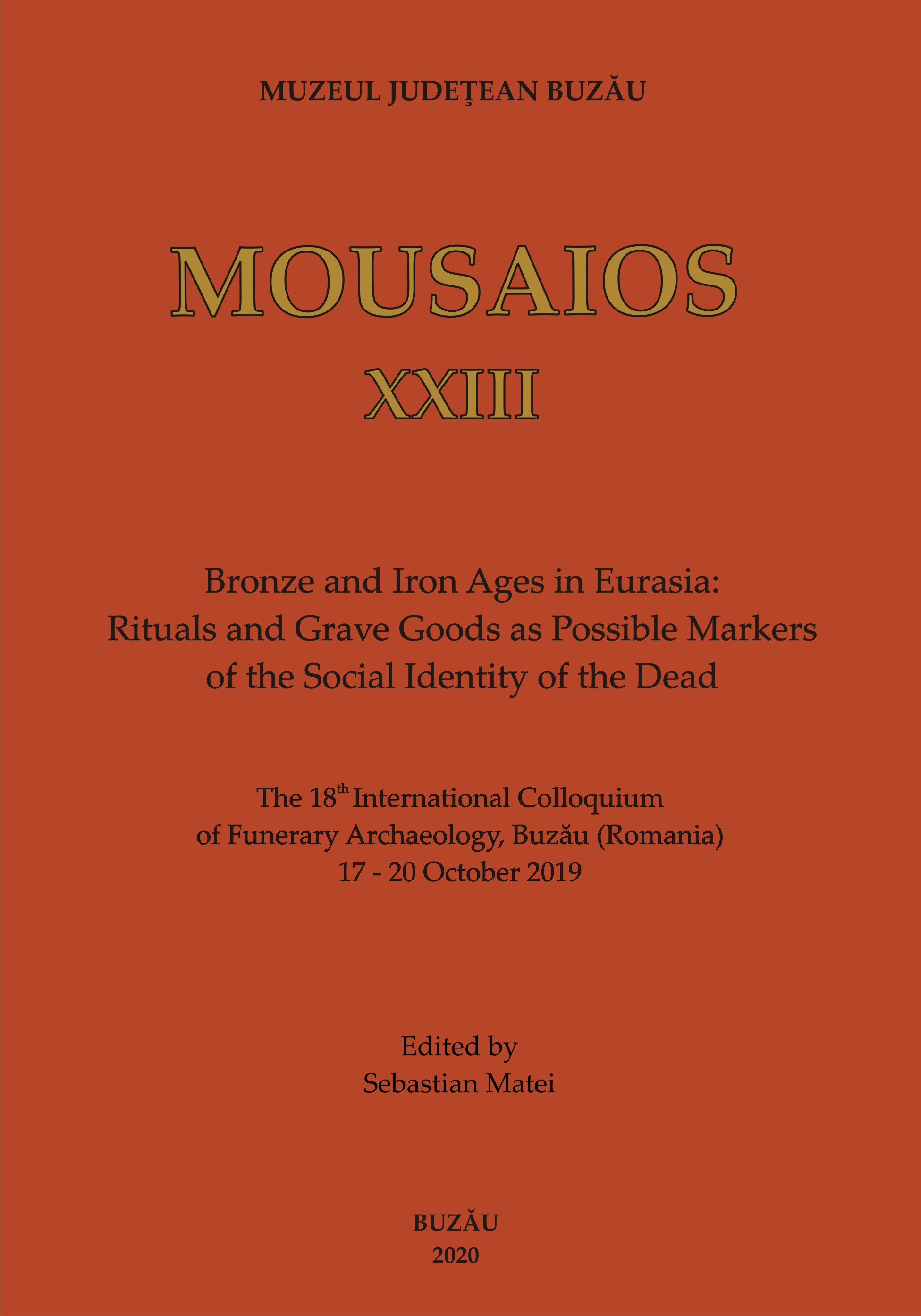DACIAN RESIDENTIAL CENTRES (DAVAE) AND TUMULI GRAVES EAST OF THE CARPATHIANS (1ST C. BC – 1ST C. AD)
DACIAN RESIDENTIAL CENTRES (DAVAE) AND TUMULI GRAVES EAST OF THE CARPATHIANS (1ST C. BC – 1ST C. AD)
Author(s): Valeriu Sîrbu, Sebastian MateiSubject(s): Archaeology
Published by: Muzeul Judetean Buzău
Keywords: Dacians; tumuli graves; residential centres; 1st c. BC – 1st c. AD;
Summary/Abstract: As it is well-known, during the last two and a half centuries before the Roman conquest (c. 150 BC-106 AD), in the area inhabited by Dacians, one notes a dramatic decrease (down to extinction) of the number of funerary vestiges, especially in the commoners’ ranks. The cremation aristocratic tumuli and the flattened graves, majority warrior, are the only ones attested during this period, but in small amounts, in certain areas, and in chronological sequencing. This study only refers to the tumuli graves in the Dacian residential centres east of the Carpathians (Brad, Răcătău and Poiana), all located on the Siret River valley. More than 40 tumuli have been identified near these davae, but only 12 have been surveyed so far, which is the reason why the general observation regarding their characteristics must be cautious. They are cremation graves tumuli with soil embankment, without urns, or just cenotaphs, that can be dated in the 1st century AD (it is, however, possible, that one or two tumuli in Poiana to date from the end of the 1st century BC or the beginning of the 1st century AD). They also present a number of specific features compared with the tumuli in the rest of the areas inhabited by Geto-Dacians: a) the absence of the stone in the funerary organisation (with one exception), b) the presence of large pits with soil bases inside or on the edges; c) the cremated bones, where available, have been found on the pyre or in other areas under the mantle, in cylindrical pits dug in the large pits or in the filling of the large rectangular pits; d) scarce inventory (with two exceptions) found in various areas of the funerary arrangements; e) the lack of representative pieces of weapons (swords, sica daggers, pikes, spears, helmets, shields, etc.). This contrast between the tumuli arrangement, the great variety of rites, on the one hand, the scarcity of inventory and offering, on the other hand, can only be explained by profound changes in the religious views and the funeral rites of Dacian aristocracy. The tumuli findings will be analysed in the relation to the residential centres nearby in order to compare the inventory in the two site types and to better comprehend the social status of the deceased.
Journal: Mousaios
- Issue Year: 2020
- Issue No: 23
- Page Range: 369-406
- Page Count: 38
- Language: English

